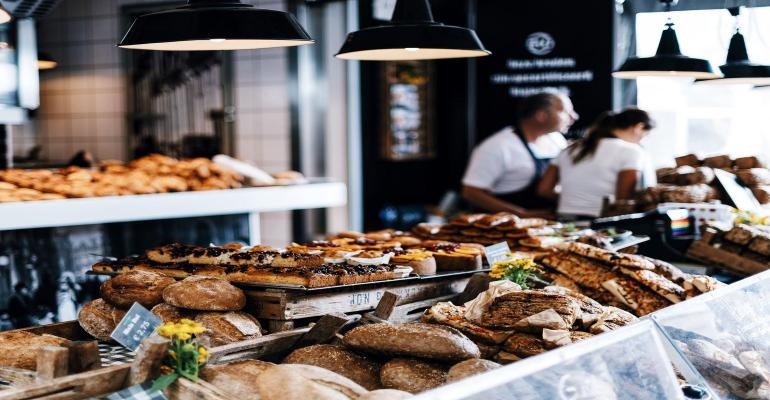Sponsored by Fourth
Customer service has long driven the hospitality sector, but the connected restaurant and hotel of the future will be data-driven in service to customers, operators and employees. The overwhelming challenge in the industry now is how to best harness the power of digital transformation.
Thanks to the Internet of Things (IoT), tomorrow’s fully connected restaurants and hotels will be able to make easy sense of the enormous amounts of data they generate each day to change how they serve customers, engage staff and run the back office. The possibilities on the operational side and customer side are potentially endless.
The immediate benefit of the connected restaurant is automating tedious manual operations. But to automate, operators need computers and systems that can understand each site’s unique needs and systems, make recommendations and then automate those recommendations into real-world decisions and processes. The connected restaurant, where mundane tasks are automated, therefore becomes a better place for managers.
For successful automation, a system requires a massive number of data points. And, it must understand, aggregate and contextualize all of those data points into meaningful insights. Examples of such data points can include everything from temperature-control fridges that constantly tell their temperatures and send an alert if the temperate changes, lighting and HVAC that automatically turns up and down to RFI tags that track who comes and goes from store room and automatically register stock levels based on what comes in or out.
On the employee side, the connected restaurant or hotel is all about how personal devices can engage them in new ways. Smart employee engagement apps on employees’ personal devices can tell operators whether they are in the building, clock them in and out and know when they should be on-premises. Operators can geo-locate to see if an employee is actually in the restaurant when they clock in and not at home clocking in. The connected restaurant could even understand exactly when a certain employee needs to be at work, so employee devices could remind them they need to be at work soon. Operators could look on Google Maps and see how many minutes the employee is actually away from the restaurant and make the needed staff and service adjustments. When the employee’s shift ends, operators can ask whether it was a good or bad shift. They can compare that invaluable information with customer feedback and determine if they exceeded forecasted sales or overspent on labor.
For operators, the customer experience Holy Grail is being able to recognize guests and give them what they perceive as a customized experience. The key technology, in terms of recognizing a guest and giving them a tailored experience, again centers around mobile devices. It’s the only way right now to recognize when a guest is about to walk in or has just sat down at their table. The connected restaurant’s Wi-Fi detects a guest’s phone and recognizes them. That could trigger a digital signage board outside that changes to show that guest’s cocktail preference or favorite entrée. They can even pre-book their orders.
Once inside, they’re greeted by a staff member who already knows who they are. Once they sit down, the RFI ID tag in their seat or in their table recognizes they're now sitting and tells the waiter and triggers the chef to start cooking the food. The system might even remember than on Monday, this guest prefers a cocktail and on Thursday prefers a beer.
It will then address the top grievance diners have – the average 11-minute wait to pay the bill. When the guest is finished and ready to leave a connected restaurant, they can just leave. Since the system know knows who they are and what they've had, and it will automatically deduct their account just like getting out of an Uber.
To do these automated things requires data processing capabilities most operators today either do not invest in or do not know how to deploy. This will only be solved by the processing power of the cloud and technology vendors who invest significantly into making connected systems work. Someone needs to build the platform devices can connect with, whether that be the cooler, the kitchen system, the till, the payment or the device the employees use to clock in and out.
Before investing time and money into building a connected restaurant, operators must plan their vision for how they want their restaurant to operate and map out the employee and guest experiences they want to deliver. Early on, they’ll need to work closely with and challenge technology partners and vendors to get help delivering connected experiences. It’s critical to get the foundation right because operators need master data on their employees, products and customers. Those three sets of data need to be rock-solid and usable. The final piece is sorting out ID and access management -- knowing who is walking into what, where and if they got access and controlling logins. Each employee must be connected.
Once operators have prioritized their innovations, they should not be afraid to fail. But, they should fail fast. Leave room to experiment, but quickly scrap and move on from mistakes. As long as the foundation is right, there’s room to experiment and see what works.
Today, vendors themselves are still experimenting with IoT to creative the connected restaurant. Refrigerators connected to the Internet that report real-time temperature already exists, as do some of the RFI capabilities and mobile employee engagement apps. But they operate in isolation. Putting it all together remains a challenge, albeit a workable one.
Regardless, the disruption has begun in the restaurant sector and the connected restaurant will be a reality sooner rather than later.




